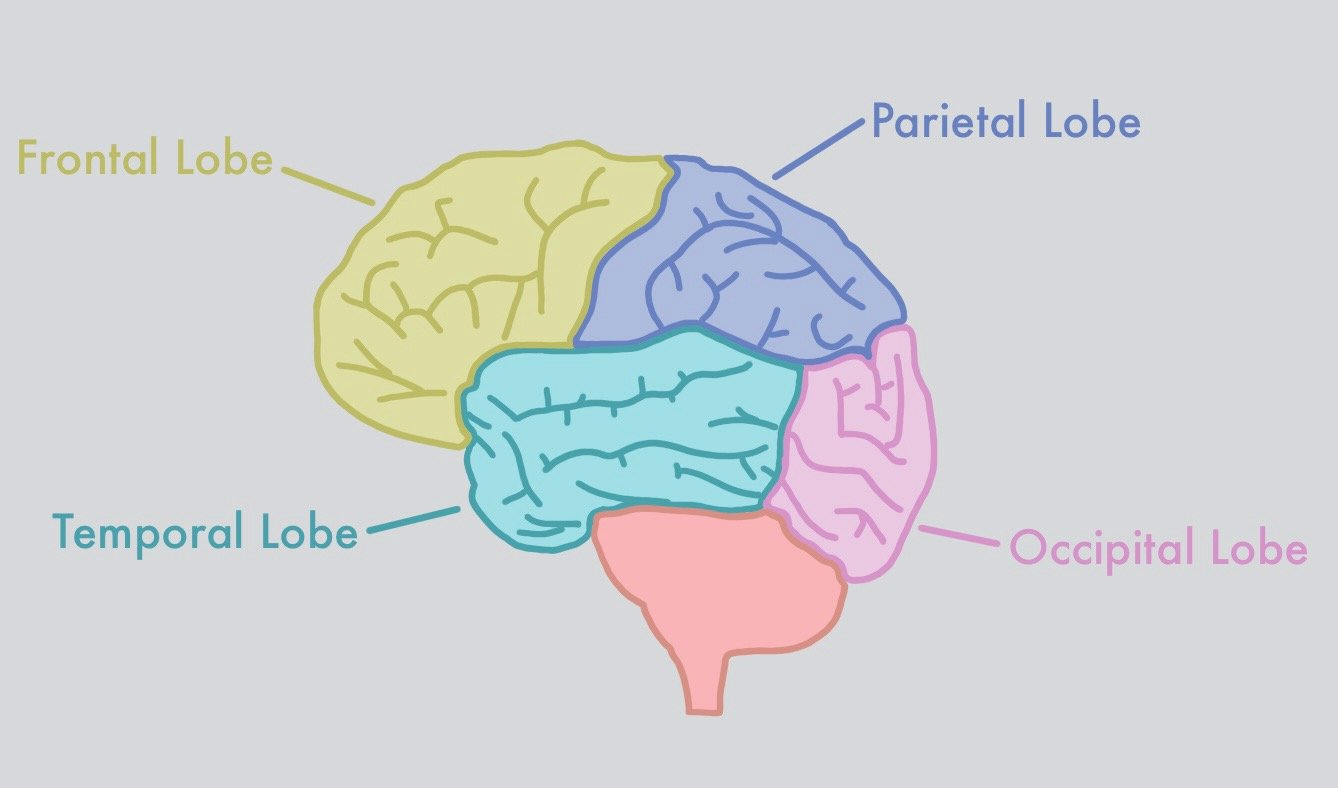Cerebrum
The cerebrum is the largest part of the brain and is responsible for our interactions with the environment and making us who we are. The cerebrum controls most of your conscious actions, including language, memory, personality, movement, learning, logic and reasoning. Additionally, it controls our five senses (sight, sound, smell, taste and touch).
Lobes of the Cerebrum
The cerebrum is made up of four lobes: frontal, parietal, temporal and occipital.
Frontal: located at the front of the head. This lobe is responsible for controlling attention, intelligence, behavior, as well as movement and speech.
Parietal: located at the top of the head. This lobe is responsible for processing language, vision, making decisions, and sense of touch.
Temporal: located at the side of the head. This lobe is responsible for memory, hearing, and understanding language.
Occipital: located at the base of the head. This lobe is responsible for understanding the input from your eyes, including the ability to see movement and color.
Left and Right Hemisphere
The cerebrum is split into two halves: the left and right hemisphere. There is a network of neurons that connect these two hemispheres and allows for communication between the two. Each hemisphere controls the opposite side of the body. In other words, the right hemisphere controls movement on the left side, and the left hemisphere controls movement on the right side.
Additionally, there are some specialized functions that each hemisphere is responsible for. For example, the left hemisphere contains more brain areas that are responsible for language and speech.



